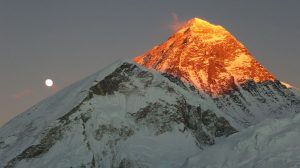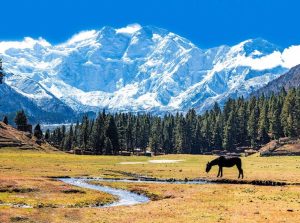Top 10 Tallest Mountains In The World
Mountains have captivated humanity’s imagination since time immemorial. Among these majestic formations, some stand out not only for their breathtaking beauty but also for their awe-inspiring height. In this blog post, we embark on a journey to explore the top 10 tallest mountains in the world, each with its unique characteristics and allure.
Mount Everest: The Tallest Peak on Earth
Mount Everest needs no introduction. As the highest point on Earth, towering at an astonishing 8,848.86 meters (29,031.7 feet) above sea level, it stands as a testament to human determination and the relentless pursuit of conquering the impossible.
K2: The Savage Mountain
Often referred to as the “Savage Mountain,” K2 is the second-highest peak globally and arguably one of the most challenging to climb. Its steep slopes, unpredictable weather patterns, and technical difficulties make it a formidable adversary for even the most experienced mountaineers.
Kangchenjunga: The Five Treasures of Snow
Named after its five distinct peaks, Kangchenjunga holds a special place in the hearts of adventurers. Its name translates to “Five Treasures of Snow,” signifying the abundance of nature’s riches hidden within its icy embrace.
Also, read about Highest Height in the World
Lhotse: The South Peak
Adjacent to Mount Everest, Lhotse boasts the title of the fourth-highest mountain globally. Its sheer, icy faces present a daunting challenge to climbers, attracting only the most skilled and daring individuals to attempt its summit.
Makalu: The Great Black One
Makalu’s ominous moniker, “The Great Black One,” hints at the mountain’s formidable presence. Standing tall at 8,485 meters (27,838 feet), it commands respect and admiration from all who gaze upon its majestic slopes.
Cho Oyu: The Turquoise Goddess
Nestled on the border between Nepal and Tibet, Cho Oyu is revered as the “Turquoise Goddess.” Its stunning turquoise hue, caused by the reflection of the sky on its icy surfaces, adds to the mountain’s mystique and allure.

Dhaulagiri: The White Mountain
Dhaulagiri, aptly named “The White Mountain,” rises majestically above the surrounding landscape, cloaked in a blanket of glistening snow and ice. Its remote location and challenging terrain make it a coveted prize for mountaineers seeking adventure and glory.
Manaslu: The Spirit Mountain
Manaslu, often referred to as the “Spirit Mountain,” holds a sacred place in Tibetan and Nepalese culture. Revered as the dwelling place of the gods, it offers a spiritual journey for those brave enough to undertake its ascent.
Nanga Parbat: The Killer Mountain
Known ominously as the “Killer Mountain,” Nanga Parbat has claimed the lives of many climbers who dared to challenge its treacherous slopes. Its towering cliffs and unpredictable weather make it one of the most dangerous mountains to summit.

Annapurna: The Goddess of Harvests
Annapurna, named after the Hindu goddess of harvests, stands as a symbol of abundance and fertility. Its lush valleys and snow-capped peaks attract adventurers and nature enthusiasts alike, offering a glimpse into the beauty of the natural world.
For more interesting facts visit our website briefbeats.com
Conclusion
In conclusion, the top 10 tallest mountains in the world are more than just geological features; they are symbols of human resilience, determination, and the unyielding spirit of exploration. Each peak tells a story of triumph and tragedy, inspiring awe and reverence in all who behold them.
FAQs
Which mountain is the tallest in the world?
Mount Everest holds the title of the tallest mountain globally, soaring to an elevation of 8,848.86 meters (29,031.7 feet) above sea level.
Why is K2 called the “Savage Mountain”?
K2 earned its ominous nickname due to its extreme difficulty to climb, with unpredictable weather, steep slopes, and technical challenges posing grave risks to climbers.
What are the “Five Treasures of Snow” in Kangchenjunga?
Kangchenjunga is named after its five peaks, believed to represent the treasures of the gods: gold, silver, gems, grain, and holy books.
Why is Nanga Parbat known as the “Killer Mountain”?
Nanga Parbat is notorious for its high fatality rate among climbers, attributed to its challenging terrain and unpredictable weather conditions.
What is the significance of Annapurna’s name?
Annapurna is named after the Hindu goddess of harvests, symbolizing fertility, abundance, and the cycle of life.
